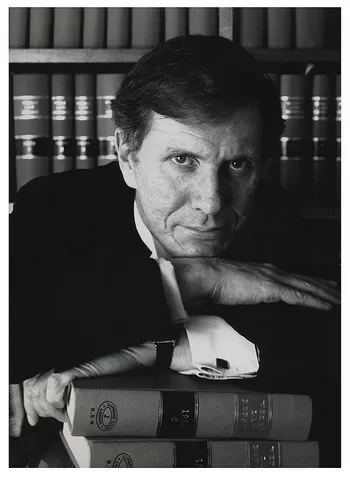Encapsulating 60 years of working life as a photographer into a cohesive narrative, is a task I find almost impossible. Threads of thought spiral off into trails of memory, triggering reveries of people and places, a multiverse of connections of between images and events.
At various times, I’ve been a press photographer, photojournalist, fashion photographer, corporate and documentary photographer. I’ve covered papal visits, political campaigns, rock and roll tours; film and television production. I’ve photographed, childbirth and food, sport and industry, celebrities and artists.
Anywhere the camera has led me, I’ve willingly followed. The trade-off of a secure life, against one of high adventure, travel and experience has been worth every moment of insecurity. The life led through the lens has been very good to me. And I’m content.




MARY, MARY QUANT, CONTRARY Mary Quant, the leggy, sexy London fashion designer credited as the inventor of the miniskirt, was her own best model for the miniskirts that dressed the decade. London fashion designer Mary Quant has been at the top of the tree long enough to make others look like upstarts. And when it comes to mini-skirts, she practices what she preaches. Mary Quant photographed for a feature on her work, for UPI, 1967 Tri-X 400, Nikon F, 28mm Nikkor.
Bikers, Tamworth Country Music Festival Circa 1980. Speed Graphic 5×4 press camera, T-Max 400, Ektar 127mm lens. When challenged very aggressively by these guys about the camera, something prompted me to tell them “You could call it the Harley Davidson of cameras…” “Then take our fucking photo!”, they demanded. It was all I could do to hide the trembling of my hand as I tried to focus.
All photos © Rob Walls. Photos used with permission
Rob Walls can be contacted via This Working Life Project °° Rob Walls Alamy Portfolio
Rob’s photography blog has more cracking yarns & great snaps.
Photographer Rob Walls biography
Born Brighton, England, August 1942, emigrated with family to Australia 1951, briefly worked in the ANZ Bank 1960-1963 until I realised my burning ambition was to become a photographer. It’s odd, how many photographers of my generation turned to photography to escape the drudgery of a life of number-crunching in banking or accountancy.
In 1963, encouraged by my brother Terry, who had noticed that the public service employed photographers, I approached the Australian News and Information Bureau in Canberra. and got a job as a photographic assistant/trainee photographer. I worked for the ANIB for two years.
This included a pivotal assignment when I was seconded for three months to run the Department of Information photographic section in Port Moresby.
It was a time when that fledgling nation, still under Australian administration, was undergoing its first elections in preparation for the transition to independence. It resulted in me gaining my first international publication; in Time magazine. I had just turned 21.
When I returned to Australia, Rupert Murdoch was establishing Australia’s first national newspaper, The Australian and based on my Time magazine tear-sheets, I was able to snag a full-time staff job.
I worked in Canberra for the first year, rapidly gaining experience before being transferred to Melbourne bureau where for the next year, I was The Australian’s only photographer
Thrown in the deep end and having to compete with the many photographers of the Melbourne dailies was a steep learning curve. I was expected to file (by picture-gram) three to five stories a day. Eighteen hour shifts were not uncommon.
By mid 1966, with all the optimism and brashness of youth, I felt confident enough to take ship to Greece, then after a month in the Greek islands, travelled overland to London by hitch-hiking, ferry and train. It was then the cheapest way of getting to Europe from Australia.
Arriving in London December 1966, I took my portfolio out into Fleet Street to find a job. There were no full-time jobs to be had, but almost everyone I showed my work to, offered an assignment.
After a couple of weeks of this, there was this lightbulb moment; as I totted up my earnings in my diary I found that I had covered rent, food and other incidental expenses.
The realisation dawned: this must be freelancing! In the 58 years since, I was never to work for a wage again. In that time, I’ve managed to freelance with varying degrees of success, across the entire spectrum of professional photography.






Press & Street Photography
(Clockwise top left) New Year revellers on their way home, Oxford Street, Darlinghurst, Sydney circa 1980. Nikon FE2 35mm Nikkor, slow shutter+flash on Tri-X.
(Right) Policeman and protester at the anti-Vietnam war demonstration outside the US embassy in London. This protest became known as the Battle of Grosvenor Square and was the inspiration for the Rolling Stones song, Street Fighting Man. London, March 17, 1968 Tri-X400 Nikon F.
(Bottom Left) Tender moment at Circular Quay between man with a backpack and a lady in red. Nikon D300, 2010
All photos © Rob Walls. Photos used with permission
Rob Walls can be contacted via This Working Life Project °° Rob Walls Alamy Portfolio
In my years on Fleet Street, I was engaged as a full-time freelance with the US agency, United Press International, shooting both news and features. Any week that went by without an interesting assignment, an adventure or travel to foreign places began to seem ineffably dull.
In 1968, in a short-lived career as a war correspondent, I covered the opening stages of the Nigerian civil war, flying on gun-running planes from Lisbon to Biafra.
My time with the ANIB in Canberra had made me a competent colour photographer and realising this UPI’s commercial photography division Compix began to commission major international corporate assignments; assignments that took me all over Europe, Africa and the Middle East.
By 1971 the glitter of “swinging London” was beginning to lose its gloss and it seemed a good time to return to Australia. Arriving back in Sydney, I began the search for work. As I soon discovered, Sydney was the opposite end of the spectrum to London.
Freelance photographer, Rob Walls
In the 1970s freelancing for the press in Sydney, was almost unheard of. Newspapers operated entirely with full-time staffers and there were no budgets allocated to hire freelancers. Nevertheless, I gave it a go. Earning the grand sum of $27.50 for my first two published pictures, I realised if I was going to avoid starvation, I’d have to reinvent myself.
I’d done a little colour fashion photography during my time in London and so with a very minimal fashion portfolio, I took myself around the magazines and almost overnight became a fashion photographer.
This work sustained me well until the Sydney newspapers following the European trend began to produce colour supplements. Because up till this time, newspaper staffers had worked only with black and white, the need for experienced colour photographers, created an almost instant demand for freelancers.
I was engaged by The Australian, the SMH colour magazine The Good Weekend, but most notably the Fairfax owned National Times which assigned me to cover the impending move towards independence in Papua New Guinea. Twenty years after covering the first elections there, I was back documenting the outcome.
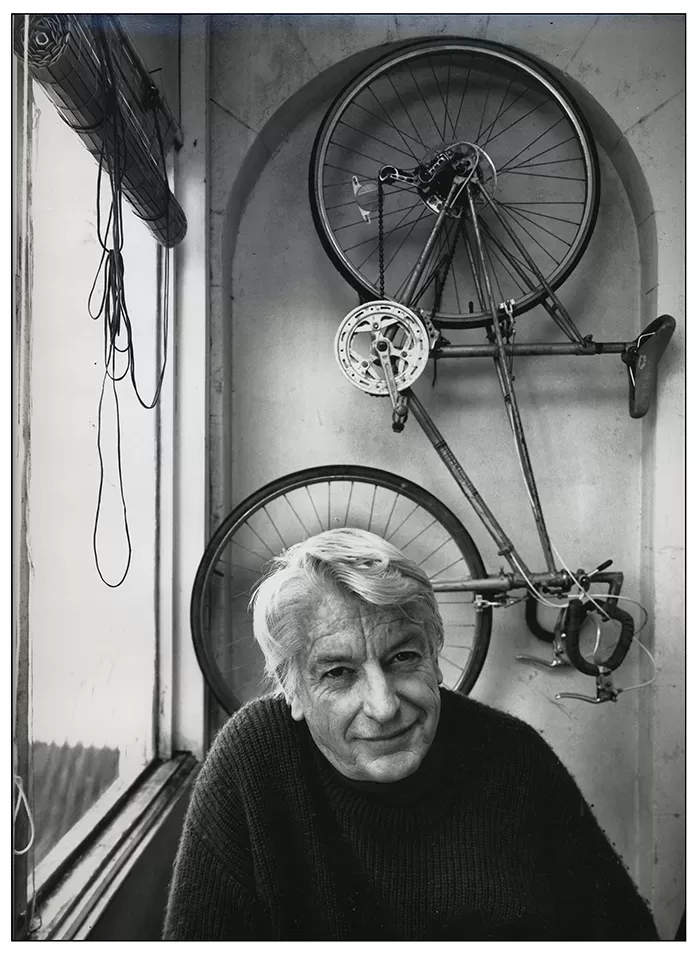

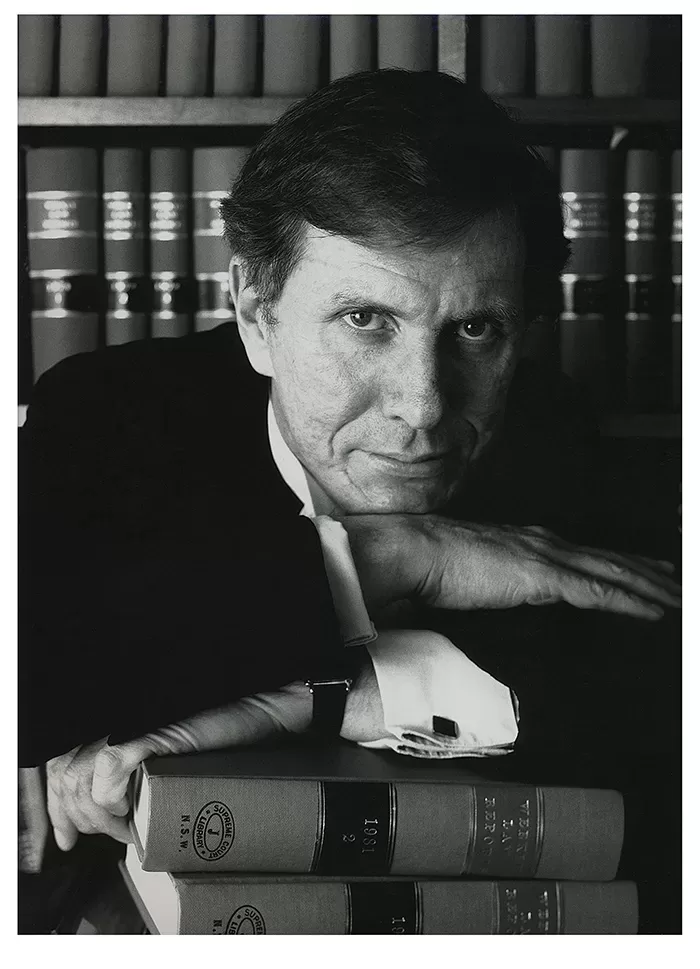

Bruce Petty. Cartoonist and film maker, Bruce Petty photographed at his Birchgrove, Sydney home, for a series of portraits of prominent Australians for the Good Weekend magazine. The dangling blind cord seemed to echo Bruce’s drawing style and the hanging bicycle allowed me to portray him as the patron saint, the doyen of Australian cartoonists. T-Max 400 5×4, Toyoview Studio monorail camera, 150mm Nikkor. 1988
Justice Michael Kirby. High Court judge, the Honorable Michael Kirby AC, CMG in his Sydney chambers. Portrait was made for a series on prominent Australians for the Sydney Morning Herald, Good Weekend magazine. 1988 The photographs were made on Kodak T-Max 400 with a Toyoview Studio monorail camera and a Nikkor 150mm lens.
All photos © Rob Walls. Photos used with permission
Also at this time I began working regularly for The Bulletin. Apart from editorial work, I was beginning to move into editorial illustrative photography for their covers. I also was doing regular assignment work for Newsweek and several assignments for them took be back to PNG.
I worked on stories on elections, the Ok Tedi mine and then covered a tour of the country by Pope John Paul II. That beautiful wild country kept drawing me back.
Around this time publishers realising the potential began publishing weekly business magazines and I began working regularly for the Packer published Australian Business weekly and then also for its competitor BRW (Business Review Weekly).
Australian Business objected to me working for a competitor and so I was able to leverage a good contract with Australian Business to work for them exclusively.
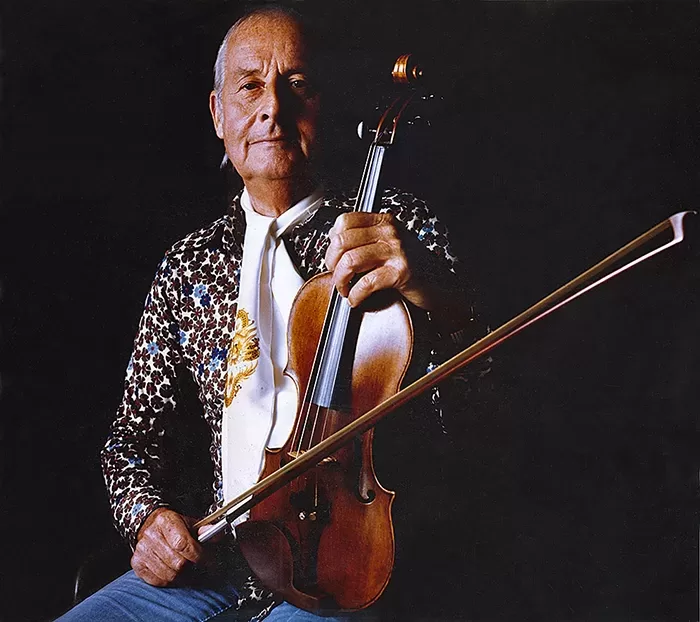

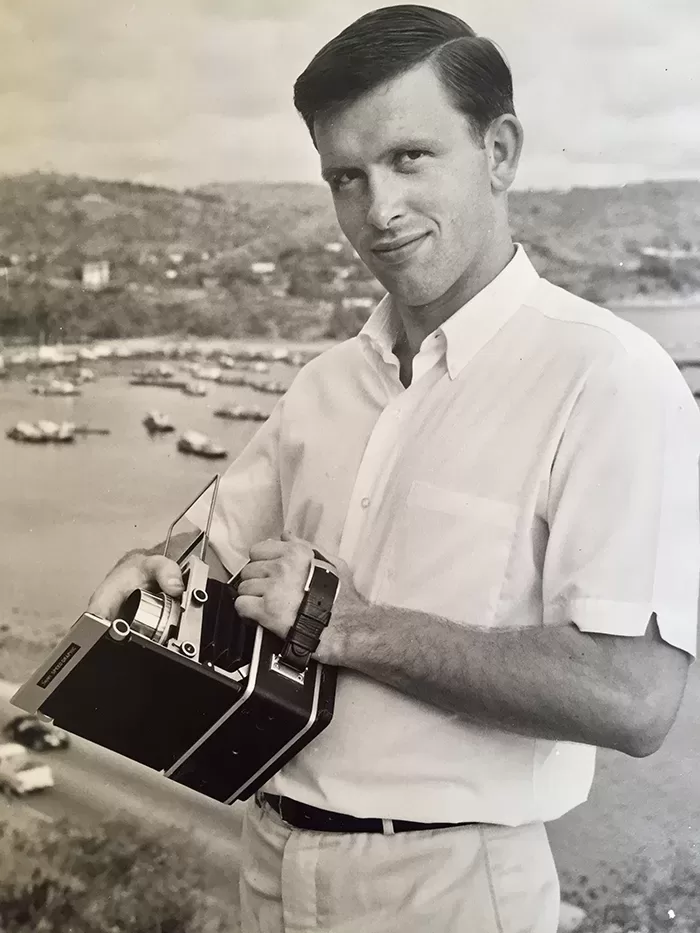

Stephan Grapelli photographed in studio for a record cover for Cherry Pie Records, Stef and Us, with George Golla and Don Burrows. Hasselblad 6×6 Ektachrome, 1977
Rob Walls The young photographer with a Crown Graphic press camera in Port Moresby, overlooking Koki Market 1964.
All photos © Rob Walls. Photos used with permission
Rob Walls can be contacted via This Working Life Project °° Rob Walls Alamy Portfolio
Rapport photo agency
Coincidentally, at this time, I had become a founder member of the soon to be influential photographer’s cooperative, Rapport and so was able to pass on the work for BRW to photographers in the agency.
This was a particularly fecund decade; Rapport opened the doors to a multitude of opportunities. It’s overall philosophy was the creation of an organisation that would allow photographers to work in whatever field they chose, at the optimum of their potential for the greatest return, with support for their projects in the field and a minimum of administrative hassle.
In the ten years of its existence, Rapport was privileged to be a mentor to so many talents, including the great Indigenous artist, Michael Riley, Melissa McCord and Chris Shain.
Chris came to us on high school work experience, went on to become a very talented professional but most importantly was instrumental in helping change the copyright law so that photographers could retain their rights in their images.
Plumes and Arrows
During this time, I had been engaged as an occasional consultant to Polaroid and also The Australian Museum. The museum consultancy exposed me to the New Guinea portraits Frank Hurley had made almost a century ago.




Left: Huli woman of Tari, with Polaroid print. A test photo of Polaroid Professional Chrome 5×4 that was to become the portrait series, Plumes and Arrows. Speed Graphic 5X4, with Polaroid print film back and Ektar 127mm lens.
Right: Rob Walls testing Polaroid Professional Chrome 5×4 with Huli people, in a small village near Tari in the PNG Southern Highlands.
All photos © Rob Walls. Photos used with permission
In a moment of what now seems sublime serendipity, Polaroid asked me to test their new Professional Chrome, a Fujichrome 5×4 transparency film, just as I was invited on a travel writers’ familiarisation tour of PNG.
Realising this film would give me the capability of shooting large format colour in the field, I borrowed a Speed Graphic, the 5X4 press camera I had begun my working life on, I used it to shoot a series of portraits of Huli people around Tari in the Southern Highlands.
With the inspiration of Hurley’s large format work as the standard to aspire to, I pulled together the backing for three more trips to PNG to document traditional costume and body decoration at the annual get-togethers called “sing-sings”.
This resulted in almost 200 large format portraits in the series I call, “Plumes and Arrows”.
In 1990, feeling I had achieved most of the things I’d set out to do when I first picked up a camera, I married and and with my wife, Sulyn moved to Hobart, Tasmania to settle down and raise a family.
Little did I realise then, that there’s life after parenthood and as our two children grew, I found I was able to get back to being a travelling photographer again and in doing so often incorporate them into my projects.
Both my son and daughter have travelled with me on assignments and both have been recruited into my work from time-to-time as models.
Having now reached an age where cataloguing my archive is a priority, I was recently excited to find I still had detailed records of the names of almost all my subjects, in the Plumes and Arrows series; their village, province and tribal grouping.
Recording these into a spreadsheet I offered a set of these transparencies to The Australian Museum. They accepted 150 of these pictures and it gives me great satisfaction to know they are now housed at the same institution where Hurley’s PNG photography resides.
This Working Life
About 15 years ago, it occurred to me that the nature of work was about to undergo a radical change. So many jobs were changing or on the cusp of vanishing completely. I came up with the idea of documenting working life in Australia for which I was able to gain substantial financial backing.
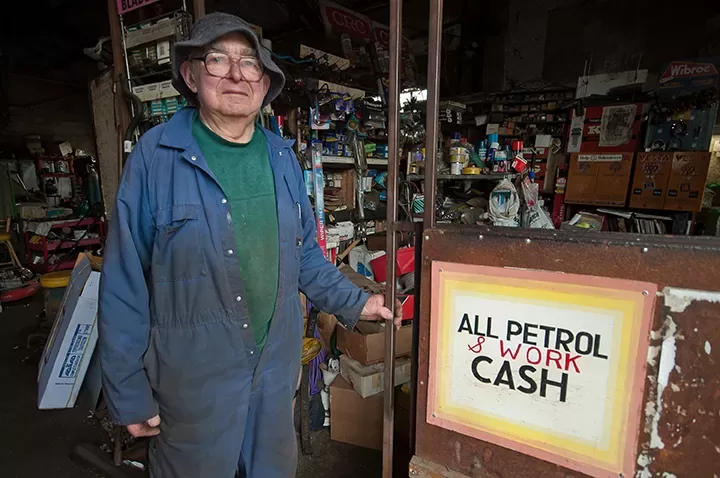

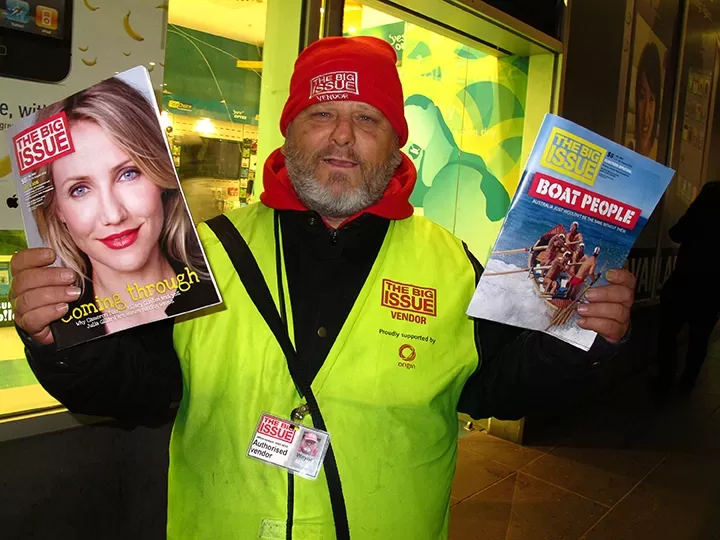

This Working Life project: 80 year old motor mechanic and garage owner, Bill McNally, Koroit, Victoria, 2010 Nikon D300
This Working Life project: Big Issue vendor, Wayne McPaul, Melbourne Central 2010, Canon G10 Powershot
All photos © Rob Walls. Photos used with permission
For several years I had the luxury being able to criss-cross Australia with neither supervision nor brief and with a valid excuse for poking my lens into other people’s business.
Free to go anywhere and to photograph whatever I wanted. I photographed opal mining; plastic recycling; film making; car manufacturing; farming; crab fishing, even prostitution.
Though the momentum for this project is winding down, I still add photos. It’s one of those open-ended projects that will only be completed when I fall off the twig.
Inspirations & Motivations as a photographer …
It is only recently, in cataloguing my work, that I came to the realisation that since the start of my career, people have always been the motivation for my photography. The common thread that binds almost everything I do with a camera are people; whether it’s someone well known or a subsistence farmer from a village deep in the highlands of New Guinea.
At the very root my photography is driven by humanity. It should be no surprise then, that one of my inspirations when I was young, and still even today, is Edward Steichen’s idealistic and optimistic, post war publication and exhibition “The Family Of Man”. In 60 years, I’ve never been without a copy.
Another has been the documentary work of the photographers of the US Farm Security Administration.
The kind of photography that inspires me is where the photographer gets out of the way and the subject becomes the entire raison d’être of the photo.
I’m also a great believer in the statement by Wilson Hicks, the renowned photo editor of Life: “The basic unit of photojournalism is one photo, with words…”
Rob Walls can be contacted via This Working Life Project °° Rob Walls Alamy Portfolio
Related Photography Feature Stories
10 photography exhibitions that defined Australia
Man Ray’s love-hate relationship with Hollywood
Photography: Real & Imagined at National Gallery of Victoria
Was Peter Lik’s world record $65 million “Phantom” photograph a good deal

